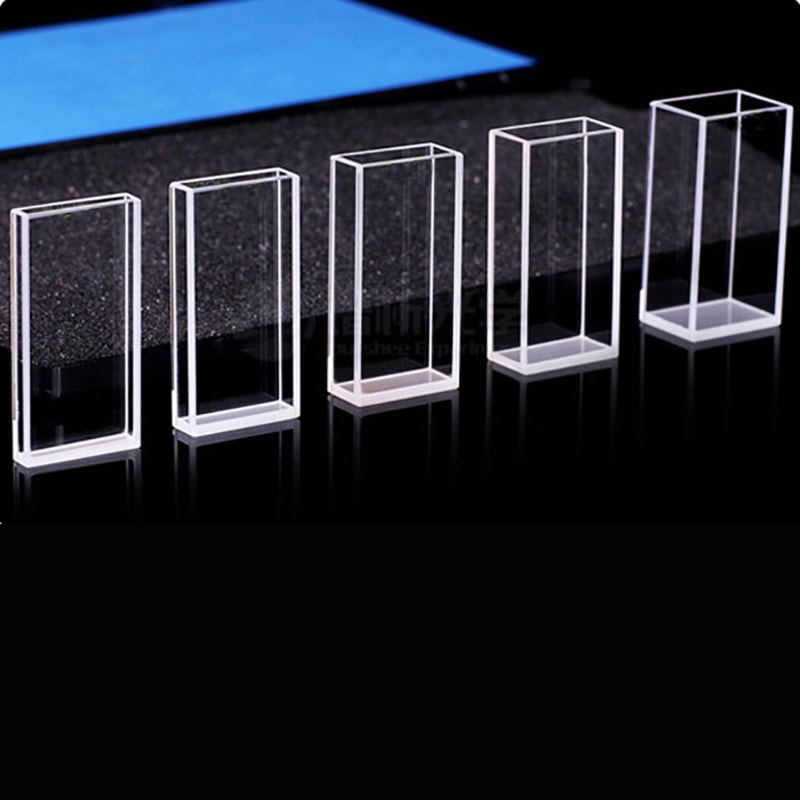Spectrophotometry is a cornerstone of scientific research and a technique that reveals the secrets of light absorption and transmittance at particular wavelengths. The cuvette is at the center of spectrophotometry, a simple yet vital container used to store samples for analysis. The cuvette is a small container that might appear to be unassuming, however its design along with the length of the path, and the selection of the materials used are crucial to obtaining accurate information about concentration and purity. Let’s take a dive into this fascinating realm where dimensions and size of cuvettes determine the outcomes of every experiment.

Image credit: cuvet.co
The Power of Cuvette Path Length
Imagine a light beam passing through an object. The result depends on the path length of the cuvette. This is how far light travels in the liquid. Many laboratories employ the standard cuvette that has a 1 cm path. This is the ideal combination of practicality and sensitivity. What is the significance of this? The longer the distance, the more light will be taken in. This increases the amount of light absorbed by weak samples. However, for concentrated solutions such as nucleic acids or proteins, a shorter path length can be a game changer. This helps reduce dilution and protect precious samples, while also reducing preparation time. What’s the key takeaway from this? It’s an art to ensure that the length of a path is in line with the requirements of the sample. This increases the accuracy.
Cuvette Dimensions and Size Cuvette Dimensions and Size: There’s More Than You Think
Cuvette size isn’t just about how much liquid fits inside it’s about how the vessel interacts with the spectrophotometer. Each container is designed for a specific task and comes in a range of shapes and sizes. Semi-micro cuvettes come in smaller sizes, but thicker walls. They are perfect for tiny sample sizes. The walls of a cuvette that are thicker reduce the interior space, which allows light to pass through a condensed sample, without losing any drop. This is an enormous improvement over the standard cuvette. It takes less steps to pipette, offers less room for error and delivers results that are solid. This clever technique proves that the size isn’t only a number, but a method of doing business.
The 1cm Length of the Path Cube The 1 cm Path Length Cube: A Lab Favorite
Why is it that the 1 cm cuvette path length is widely used in research? It’s ideal to measure biological parameters when the samples are in short supply and milliliters are a lot. This standard design gives consistent absorbance readings without overwhelming the detector. This makes it perfect for everything from DNA quality checks to enzyme assays. It’s not the hero that fits all. If you change it for a cuvette that has a different geometry or path length, such as one used for emission studies, the results can be extremely distorted. Precision depends on selecting the right tool and not just the most well-known one. A cuvette that is not properly matched can be compared to a poorly tuned instrument.
Material Matters Beyond Path and Size
Cuvette dimensions are just one aspect of the tale. The choice of the material is the final piece. High transmission rates of glass and quartz cuvettes permit light to move through them without interference. They are strong and reusable, making them ideal for spectroscopy. On the other hand plastic cuvettes add value and ease of use to the table. They don’t require cleaning, there’s no cross-contamination. Just use and throw away. These are excellent for testing in aqueous fluids or speedy DNA/RNA tests. The price? Inaccurate at certain wavelengths. For those who are a purist, quartz is preferred while pragmatics might prefer plastic.
Perfect Practice and Precision
Cuvettes’ flexibility is the reason they are so attractive. With spacers, shorter paths can be used to handle large quantities of samples. Larger vessels are suited for bulkier volumes. Any choice in length, size, and material affects the test, shaping the clarity of the outcomes. The lab is measuring a rare, protein. A semi-microcuvette that is a little shorter can be able to avoid the dilution issues and produce precise results in a short time. Contrast that with a sloppy change of cuvettes during the experiment, and the data is skewed. This is a great reminder that the smallest of details can have a big impact on the spectrophotometry.
Cuvettes might be small, but their role is mighty. From the 1cm path length cuvette up to custom dimensions, these vessels can bridge the gap between samples and insight. If you’re seeking pureness or concentration using the correct cuvette, you can turn an excellent measurement into an outstanding evidence that in science, precision starts with the tools at fingertips.